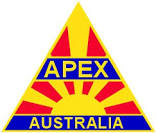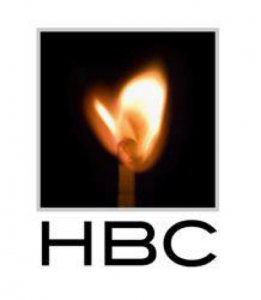In the late spring of 1944, most people knew the invasion of mainland Europe was imminent, but very few knew where and when. It was the job of the senior meteorologists to advise the Supreme Commander as to when.
Bomber and fighter aircraft each required different cloud conditions.
Very strict minimum weather conditions were laid down, with different flight criteria for each arm of the operation. Bomber and fighter aircraft each required different cloud conditions. Gliders needed a moonlit night with no fog or mist.
The Army needed firm dry ground, so no heavy rain before the date. The Navy needed winds no stronger than 10 knots, good visibility and no prolonged high winds in the western approaches for the days immediately preceding the operation, thus limiting the size of any waves and swell in the English Channel. These quiet conditions should then persist for as long as possible after the initial assault.
It would have been much easier if the date of the assault could be decided at very short notice, but this was not possible, as a large invasion force could not be kept waiting around indefinitely for suitable weather.
It was decided that the senior meteorologists of the Meteorological Office, the Naval Meteorological Service and the Weather Service of the United States Army Air Force, would work independently on predicting the likely weather patterns. Dr Stagg of the British Meteorological Office, seconded as a Group Captain in the RAF, was appointed as the co-ordinating forecaster to brief the Supreme Commander and his staff.
The forecasters were concerned with two parts of the forecast – the detailed requirements for the start of the invasion, and the much longer period for the build-up of the troops after that.
At first the meteorologists studied the climatology at the most likely time of the invasion, to give them an idea of the most usual weather for that time of year. This showed that either May or June was probably better than July, but it was already too late for arrangements to be made for May.
The tide, state of the moon and time of sunrise combined favourably on June 3rd and the following two days. A fine quiet spell in late May gave way to more unsettled westerly winds, and by the beginning of June there was a very common weather picture, with an Azores high pressure belt extending into the Bay of Biscay and a frontal system and its attendant low pressure areas stretching from Scotland and into the western Atlantic.
All the forecasting advice now hinged on the movement of the lows and the weather fronts, but in 1944 forecasters trying to see 48 hours ahead was at or beyond the limits of what was possible.
On the strength of this uncertainty on June 3rd, the Supreme Commander postponed the invasion…
It looked as though the weather in the Channel would be marginal for the proposed landings on June 5th. Being sandwiched between the high pressure belt over France and the low pressure further north meant that the south-westerly winds would be too strong and bring in too much cloud, making the bombing in advance of the attack very difficult. On the strength of this uncertainty on June 3rd, the Supreme Commander postponed the invasion for 24 hours.
The three weather centres continued to debate the possible solutions in the weather scenario. Low pressures were developing in the western Atlantic and moving northeast across Scotland. This kept the weather fronts to the northwest and consequently continued to feed in strong south-westerly winds through the English Channel.
The general consensus was that there was likely to be little change in the overall picture, but then unexpected developments occurred on Sunday, June 4th.
Although pressure was falling quickly over Ireland and a cold front was moving quickly east, an observation was being reported from a ship stationed due south of Iceland, which showed sustained, rising pressure. This observation was from a Royal Navy vessel stationed there for the specific purpose of providing meteorological observations from an area, which has a major influence on Britain’s weather patterns.
Stagg realised that nothing could stop the cold front moving through the Channel, and it now also looked as if a low pressure system out in the mid-Atlantic would slow down and intensify. More important, however, was the information from the Navy ship.
Taken together with all the other data, it could indicate that a ridge of high pressure was developing behind the cold front, which was presently sweeping over the Channel. If this continued, there could be enough of a window in the unsettled weather over the Channel, and the assault area, just for the critical hours on Tuesday June 6th.
If this happened, there could be a period of improved weather in the landing zones long enough to allow the first critical assaults to be made on June 6th. By the early hours of that morning, the weather would be suitable for the heavy bombers, although large areas of cloud might curtail later operations. This however, was likely to be high enough to enable the fall of shot to be spotted for the naval heavy guns.
Stagg now had to persuade the Supreme Commander to take advantage of this most unlikely break in the very unseasonable weather and hope that the German forecasters on the French coasts had not spotted this subtle change in the weather pattern.
…the weather outlooks had changed so violently in recent days.
Stagg informed General Bull on the Sunday evening of the probability of the weather window on the 6th (Tuesday), but it was treated with some understandable caution, since the weather outlooks had changed so violently in recent days.
On Sunday evening (June 4th), the Commanders-in-Chief and their senior staff assembled in the library. Stagg and Yates entered and briefed them on the recent weather developments, describing the latest optimism. Air Chief Marshal Tedder asked what confidence Stagg had in the forecast he had just given, and was told that the confidence was high for a spell of fine weather behind that cold front, but not so high for a continued settled spell after that.
The Supreme Commander then discussed the position with his Chiefs. The atmosphere was tense and grave. He then asked General Montgomery if there was any reason why they should not launch the attack on June 6th, to which Montgomery replied, “No. I would say go”
They all met again at 0415 on Monday, June 5th. The room was quiet when General Eisenhower asked Stagg for his opinion, and was told that no substantial change had taken place since the last briefing and that fair weather would extend through all of southern England that night and last into Tuesday afternoon.
There would be small amounts of cloud and the winds in the assault area would be Beaufort Force 3 to 4, locally Force 5. Later on Tuesday it would become cloudier with more unsettled weather at times again between Wednesday and Friday. The relief was immediate. The Supreme Commander broke into a broad smile and told Stagg that if this forecast came off they would all have a celebration when the time came.

